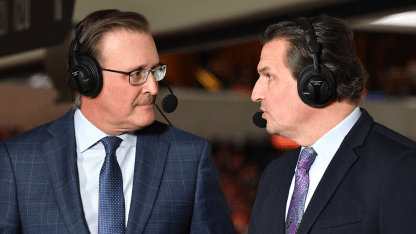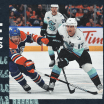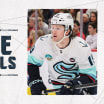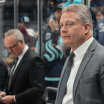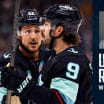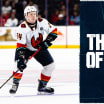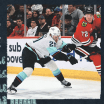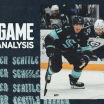Think of a great friend from high school or college, somebody you would like to see more often. Then imagine that friend is a teacher/entertainer who loves the subject matter as much as you do. The great friend’s notes and attention to class-in-session details are Hall of Fame quality.
Then consider a favorite teammate from sports or the debate club or jazz band, the one who’s a key performer and always has plenty of one-liners to keep it light.
Finally, think about the coolest person you know at work, school (classmates, teachers, coaches or parents), or maybe someone who stands out in your neighborhood. Add in a sense of modesty that belies the person’s professional standing. Cool and accomplished, but never brags. Good stuff.
In your mind, you have just imagined the Kraken Hockey Network trio of play-by-play man extraordinaire John Forslund and two of the sport’s most compelling analysts, nationally-renowned Eddie Olczyk and rising personality JT Brown. Now deep into their third season together – with Forslund and Brown in Year Four – the game conversation flows as smoothly and naturally and quick-reflexed as Brandon Montour jutting and cutting through all three zones on the ice. Victory or defeat, Kraken fans are appreciating and welcoming the close-knit trio into their personal viewing spaces more than ever this season as KHN has expanded reach via KING, KONG, Prime Video and more than a dozen broadcast affiliate stations across Washington, Alaska, Oregon, Idaho and Montana.
Second (Period) to None
On this January game night at Climate Pledge Arena, the second period is about to begin. Many Kraken fans know what comes next, or at least will recognize it here, typically before any call on the middle-frame action.
“Welcome to the period of the long change,” said Forslund, repeating some version of that introduction as a signature move of his game calls. It’s a prime example of the future Hockey Hall of Famer’s nightly teaching of the sport as he unfolds what happens on every shift. Hockey’s shifts, of course, ideally last about 40 to 45 seconds in order to keep the five freshest skaters on the ice at all times.
Hockey players “changing on the fly” is unique to team sports and sets up a strategy every game, even before the puck is dropped. Players and coaches alike have a system for making those changes. When the teams switch sides in the second period, those players exiting the ice have a longer distance to skate from the defensive zone, which can wreak havoc and scoring chances if play suddenly reverses and the exiting players have reached the bench quickly enough to replacements on the ice.
Forslund routinely mentions the long change when situations arise, such as this game, pointing out that starting goalie Philipp Grubauer has a longer distance to sprint to the bench during a delayed penalty call, in turn holding back an extra attacker until the goalie arrives. Olczyk has a keen eye for when Kraken players are tiring on the ice, alerting fans to the danger of extended shifts and adding the long-change element during the middle 20 minutes. Brown’s habit between each period is to pore over stat sheets to discover (often to affirm his own analysis) which players are averaging longer shifts than desired by the coaches, especially against a strong opposing forward line.
“It's a longer change than the first and third periods,” said Forslund during the first intermission one night (for more, check out the video embedded in this story). “I point that out because a lot of the scoring plays, penalties because of too many men on the ice, and general chaos are all caused because of long changes. Players get more fatigued depending on how well a team manages the puck. If they can't get off the ice quick enough, that leads to scoring chances and eventually goals.”

